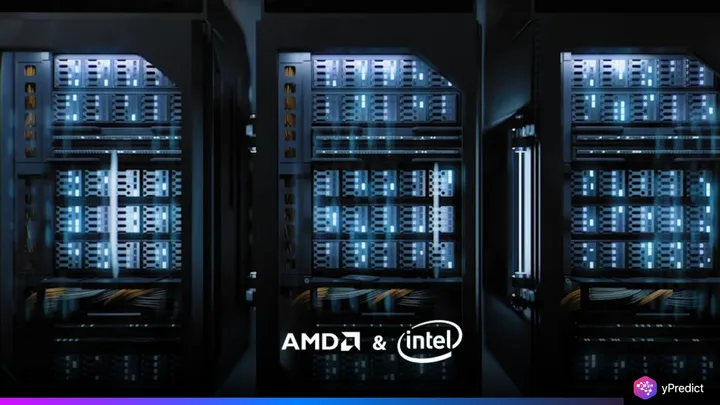
AMD is tightening its grip on the fast-moving AI hardware market with its upcoming Helios rack-scale systems. Announced earlier this month, the new solution could beat Intel to market by nearly a year. The system is expected to launch in 2026 alongside AMD’s powerful MI400 AI accelerator chips.
Meanwhile, Intel is still searching for a stable strategy. Its Gaudi AI chips struggled to gain traction, and the company is now pinning hopes on a future rack-scale architecture called Jaguar Shores. “We want to rethink AI infrastructure from the ground up,” said AMD VP Forrest Norrod. As cloud providers and AI firms seek more efficient large-scale deployments, the timing couldn’t be more critical. AMD’s early momentum could reshape the competitive landscape.
Helios Aims to Redefine Rack-Scale AI Systems
The Helios system from AMD is designed for what’s called “rack-scale” computing. That means instead of optimizing individual chips, it combines GPUs, CPUs, and networking across an entire rack of servers. At the heart of Helios are AMD’s upcoming MI400 accelerators and Venice EPYC CPUs, each with up to 256 cores. Together, they will power demanding AI workloads like training large language models.
Up to 72 GPUs can be interconnected using UALink, an open standard that AMD supports. For smooth data flow, the system includes Volcano NICs, high-speed networking cards developed by Pensando, which AMD acquired in 2022. “We’re building a tightly integrated platform for AI at scale,” Norrod added. The goal is faster training, better efficiency, and simpler system management for companies deploying AI at a massive scale.
AMD Builds Momentum as Intel Lags Behind
AMD’s rack-scale strategy already has traction. Cloud giant Oracle uses the company’s MI355X GPUs in its infrastructure. OpenAI is reportedly lined up to use the MI400 chips when they’re released. These early wins matter in a market where Nvidia still dominates. By contrast, Intel’s approach has faltered. The Gaudi 3 chip offered lower costs but lacked software maturity and customer confidence.
Intel abandoned its Falcon Shores project and is now focusing on Jaguar Shores, a rack-scale concept unlikely to arrive before 2026. With Lip-Bu Tan stepping in as CEO and a new CTO appointed in April, Intel is undergoing a leadership shakeup. Layoffs and strategic resets are in motion. But these changes may delay Intel’s AI recovery just as AMD gains ground. “We’re focused on long-term, integrated solutions,” an AMD engineer said. If Intel slips further, it may cede more space to rivals like AMD and Nvidia.
AMD Redefines AI Infrastructure With Helios Launch
AMD’s aggressive move into rack-scale AI systems signals more than a product launch. It suggests a shift in how large AI deployments will be built and scaled. With demand growing for efficient training and inference systems, customers are looking beyond raw chip specs. They want entire solutions that can handle scale, speed, and reliability.
AMD seems to be delivering on that demand, while Intel is still reshaping its roadmap. If AMD’s Helios performs as promised, the company could carve out a significant position behind Nvidia. For Intel, the pressure is building. To stay competitive, it must deliver not just hardware but trust, integration, and vision. The AI race is now as much about systems as it is about silicon.






